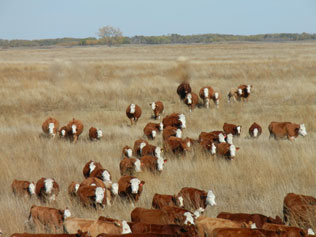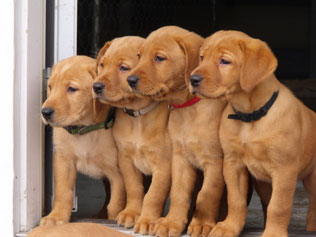The Most Popular Breed for More than 20 years
The Labrador Retriever (also Labrador, or Lab for short) is one of several kinds of retriever, a type of gun dog. A breed characteristic is webbed paws for swimming, useful for the breed's original purpose of retrieving fishing nets. The Labrador is the most popular breed of dog by registered ownership in Canada, the United Kingdom, and the United States (since 1991). It is also one of the most popular assistance dog breeds in Australia, Canada, the United Kingdom and the United States and many other countries, as well as being widely used by police and other official bodies for their detection and working abilities. Typically, Labradors are athletic and love to swim, play catch and retrieve games, are good with young children, and for protection.Labradors are an intelligent breed with a good work ethic and generally good temperaments (breed statistics show that 92.3% of Labradors who were tested passed the American Temperament Test.) Common working roles for Labradors include: hunting, tracking and detection (they have a great sense of smell which helps when working in these areas), disabled-assistance, carting, and therapy work. Approximately 60–70% of all guide dogs in Canada are Labradors. The breed is also used in water rescue/lifesaving.
Color Facts
In a litter of fox reds you will always get a variation of shade from medium to dark., even on breeding fox red to fox red, much the same as the variation of color on yellows or chocolates. On all fox red puppies, as they get older, the color will darken, usually up to the age of about 2-3 years. When you look at a new puppy ,you are looking at the undercoat, not the guard hairs, it is the guard hairs that determine the variation of the body coat, medium to dark. This undercoat will appear to be the color of a brown paper bag. The head and ears should appear to be red, medium to dark, also the pigment should be a peach color, not a bright pink like the yellow. As soon as they are born, they appear fairly dark, within a couple of weeks they lighten up as their undercoat develops. The red will appear as the guards hairs start to grow. All fox red's are registered as yellow.
Interest in the darker shades of gold and fox red were re-established by English breeders in the 1980s, and two dogs were instrumental in this change: Balrion King Frost who consistently sired "very dark yellow" offspring and is credited as having "the biggest influence in the re-development of the fox red shade", and his great-grandson, the famous Wynfaul Tabasco , described as "the father of the modern fox red Labrador",other dogs, such as Red Alert and Scrimshaw Placido Flamingo, are also credited with greatly passing on the genes into more than one renowned bloodline.
Temperament
Labradors are a well-balanced, friendly and versatile breed, adaptable to a wide range of functions as well as making very good pets. Labradors have a reputation as a very mellow breed and an excellent family dog including a good reputation with children of all ages and other animals. Females may be slightly more independent than males. Labradors mature at around three years of age; before this time they can have a a lot of puppyish energy, leash-training early on is suggested to prevent pulling when full-grown. Labs often enjoy retrieving a ball endlessly and other forms of activities. Almost every Lab loves playing in water or swimming.
They instinctively enjoy holding objects and even hands or arms in their mouths, which they can do with great gentleness a Labrador can carry an egg in its mouth without breaking it. They are also known to have a very soft feel to the mouth, as a result of being bred to retrieve game such as waterfowl. They are prone to chewing objects ,though they can be trained out of this behaviour.
Although they will sometimes bark at noise, when there is noise from unseen sources, Labs are not on the whole noisy or territorial, and are often very easygoing and trusting with strangers, and therefore are not usually used for protection as guard dogs
Labradors have a well-known reputation for appetite, eating digestible and non-food objects alike. They are persuasive and persistent in requesting food. For this reason, you must carefully control their food intake to avoid obesity and its associated health problems
The steady temperament of Labs and their ability to learn make them an ideal breed for search and rescue, detection, and therapy work. Their primary working role in the field continues to be that of a hunting retriever.
English Labs vs. American Labs
The terms "English' and "American" are generally used to describe the physical differences and appearances between one Labrador Retriever and another. They are all the same breed.
The English style Lab has a more compact, stocky body and a square head, that are generally seen in the show ring for conformation. The American style Labrador is usually longer legged and longer bodied with a more lean appearance, and longer nose, these are most often seen working in the field as hunting retrievers. The English style Labrador is more laid back and the American style Lab is more high energy for long days in the field. Both styles are excellent retrievers, swimmers, companions, and family members, and easily trained for what you want.







